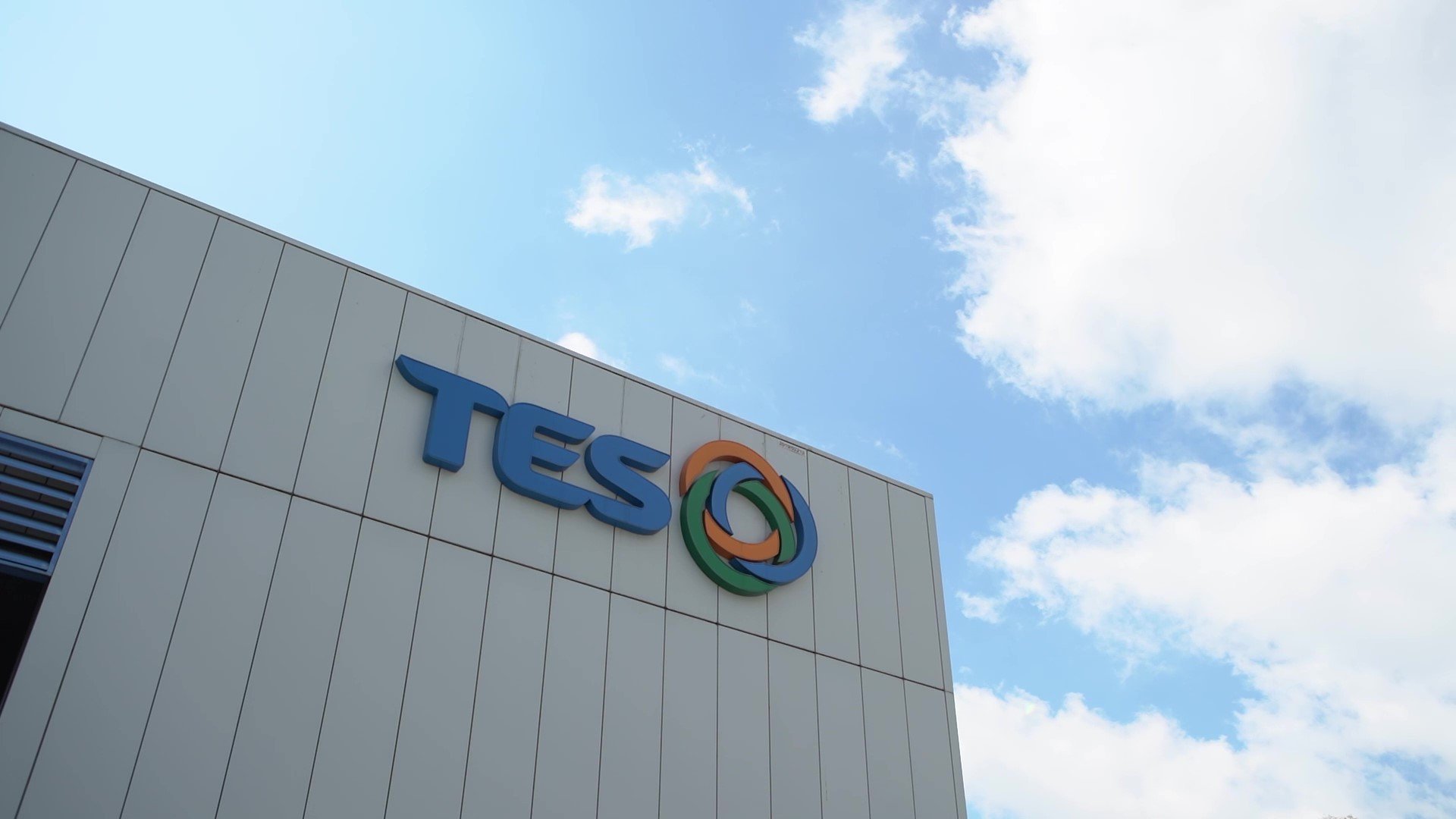From digital transformation to more efficient processes, technology is a fundamental driver of innovation and plays an important role enabling the circular economy.
However, there's reason to be cautious when it comes to IT asset management, as it's predicted that 74.7 million metric tons of e-waste will be generated globally by 2030.
Not only this, but enterprise IT's contribution to greenhouse gas (GHG) emissions is set to grow annually; by 2025, enterprise IT will have the equivalent carbon footprint of 463 million passenger vehicles driven for a year.
With this in mind, there's an increasing effort from global organizations to minimize this impact, and recognition that technology lifecycle management plays a significant role in companies achieving their environmental, social and governance (ESG) goals.
Most organizations entrust IT Asset Disposition (ITAD) service providers to manage their IT and data center asset effectively. ITAD partners extend the usable life of technology, handle IT responsibly and report on contribution to sustainability objectives.
In this blog post, we'll explore sustainability in IT and how businesses can optimize their IT asset disposition processes to contribute to their sustainability goals.
- What is sustainable IT?
- The impact of IT on the environment
- Aligning with your company's overall sustainability strategy
- Achieving sustainable IT
- ITAD — Future-proof your IT disposition
What is sustainable IT?
To make IT sustainable, the manufacturing, production, use, management and disposition of assets needs to be environmentally and societally responsible. The circular economy refers to an economic and industrial system designed to minimize waste and maximize the reuse, recycling and regeneration of products and materials. It aims to create a sustainable, closed-loop system in which resources are used efficiently and continuously.
Essentially, it ensures that the needs of the present are met without compromising the ability of future generations to meet their needs.
In the IT industry, the mining of resources and production of assets has an environmental impact as well as an impact on the lives of people in mining communities. Sustainable IT addresses these impacts, with social equity and economic development needs at the forefront.
The impact of IT on the environment
There's an ongoing desire within organizations worldwide to implement new, sustainable ways of doing business. IT contributes to the world's carbon footprint, so extending the lifecycle of IT and data center assets, parts and materials can play a critical role in reducing its environmental impact.
- By 2030, 21% of global electricity consumption will be due to ICT production and operation.
- More than 160,000 laptops are retired every day in the EU alone.
Technology use comes with a burden, the environmental impact associated with producing and using IT equipment. With sustainability identified as the key driver in 69% of organizations worldwide regarding IT, it’s no surprise that businesses are looking for ways to manage the lifecycle of their technology more responsibly.
Your company’s overarching sustainability strategy will likely have a deliberate focus on a just transition to a sustainable economy, alongside a clear alignment to meeting the goals outlined in your overall business strategy.
Aligning with your company’s overall sustainability strategy
It's vital that your processes align with your company’s overarching sustainability strategy.
This is where net zero goals come into play. They are critical components of sustainability reporting and measurement which helps organizations assess and communicate their environmental impact. They’re fundamental in assessing the full extent of an organization’s commitment to achieving carbon neutrality, allowing for the tracking of progress and facilitation of informed decisions.
Your IT asset disposition decisions contribute to your sustainability goals by:
- Extending the lifecycle of equipment by avoiding the production of new materials and assets.
- Establishing a responsible and transparent supply chain.
- Ensuring your selected vendor is committed to performing their services with the lowest carbon footprint possible, with their own net zero goals.
- Ensuring regulatory compliance.
Extend the lifespan of your equipment with appropriate routing for reuse, remarketing and recycling
Using market knowledge, IT and data center assets, as complete units or component parts, can be routed for reuse within your organization, resold to another user or recycled to recover manufacturing grade materials, resulting in environmental and social benefits.
By reusing assets, you avoid the production of new units and the emissions and resource use associated with it, ultimately reducing the environmental impact of your equipment.
You should also consider if your ITAD provider offers carbon reporting that indicates how much carbon is avoided by reusing or recycling instead of buying new assets.
A responsible and transparent supply chain
Reporting is a key part of aligning with your company’s overarching sustainability strategy and can be done by implementing a clear IT asset management system that tracks assets from procurement to disposition. Here are some pointers to facilitate a robust reporting process.
- Contracting with a global organization means you can have a single point of contact and control over a globally standardized process.
- Look for a vendor to work with that has established their own ESG goals and produces sustainability reporting.
- Emphasize transparency. Is there a documented chain of custody? Can you track what’s happening to your assets? Does your chosen partner perform all the required services themselves? If not, how do they manage subcontractors?
- Does your partner have a policy on modern slavery and how do they aim to recover material in a way to allow the better control of material supply?
The system should also include accurate reporting tools that offer insights into sustainability metrics, such as carbon emissions. Referencing these figures will give you an understanding of how your implementations are tracking against your company’s strategy, highlighting progress and identifying areas for improvement.
Ensure best practice and regulatory compliance
Following international guidance and ensuring regulatory compliance gives you absolute peace of mind that your equipment is being dealt with correctly and mitigates the risk of legal ramifications or reputational damage, all while contributing to your sustainability objectives.
This is achieved by working with an ITAD provider that’s certified to carry out data destruction to industry standards, such as the R2 (Responsible Recycling) certification program or the NIST 800-88 standard. Understanding the Basel Convention is also important, as moving waste transboundary in a legal and compliant manner ensures the best possible recovery potential.
Another essential part of working with ITAD companies is that they provide absolute transparency of an asset’s end-of-life phase; asset management systems don’t provide this level of detail.
ITAD companies should also be able to provide reporting on their own emissions to contribute to your Scope 3 reporting.
Reducing your environmental footprint
There are several areas to investigate to ensure your IT disposition is as sustainable as possible.
1. Resource use — reuse
Reusing existing IT equipment is a simple way to minimize environmental impact, providing a cost-effective alternative to buying new hardware. Retired computers and servers can be repurposed and used for other business processes, helping to prolong the hardware's lifecycle. Keeping products and materials in circulation for as long as possible will reduce the current unsustainable demand on resources.
IT asset disposition (ITAD) services manage assets at the end of their first lives in ways that mitigate compliance, data security and environmental risks — and at the same time should optimize the resource use required for technology assets.
An ITAD vendor will offer onsite services, secure reverse logistics and streamline the refurbishment and disposition of assets through remarketing. If this isn’t possible, spare parts can be harvested from assets that can give components a second life.
This allows you to not only recover value from assets, but to create a sustainable circular economy for IT assets.
2. Adopting e-waste best practices
If an asset is no longer usable and has lost its residual value, it should be recycled via a certified e-waste program, where advanced techniques ensure maximum material recovery, reducing the requirement for virgin materials in product manufacturing.
From pick-up to repurposing, these services process electronic waste using sustainable processes. An example of how e-waste recycling works with TES can be seen below.

Poorly discarded electronics can pose a considerable environmental hazard, as they contain toxic materials that can leach into water and soil. Responsible recycling or disposal of assets can recover valuable resources for reuse and reduce the negative environmental impact.
3. Contribution to emissions reduction goals
Measure your reuse, remarketing and recycling percentages and look to extend technology lifecycles within your business.
Measure the impact this has on reducing the amount of IT and data center equipment manufactured and include it in your GHG emissions reporting.
4. Gain control of your vendor management
Ensure your supply chain is compliant and responsible by reducing the number of vendors around the world.
Managing ITAD vendors globally or regionally instead of locally gives greater oversight, mitigates the risk of non-compliance and reduces vendor management resource burden.
ITAD — Future-proof your IT disposition
Knowing where to start with reaching your sustainability goals can take time and effort. From ensuring your IT asset disposal procedures align with your company's sustainability goals to sustainable IT management, implementing adequate procedures can be a long road.
Thankfully, we've put together a checklist that you can use to maintain socially responsible procedures when disposing of your IT assets.
It covers business continuity, risk management and asset value optimization to ensure you're sustainably and efficiently disposing of e-waste.
To access your copy of the checklist for life, click below.







